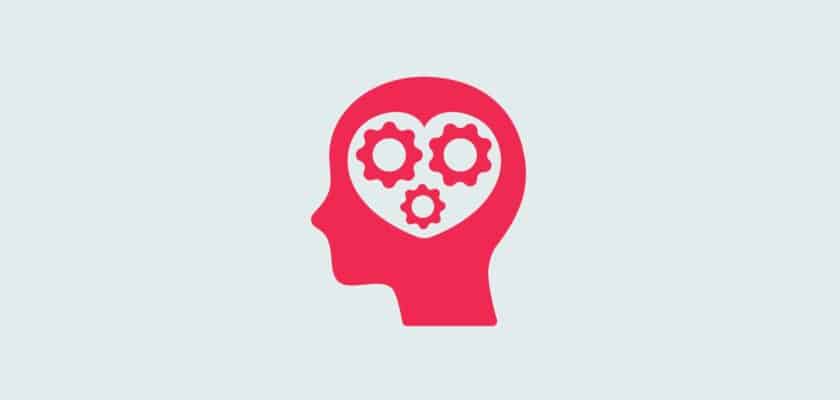To keep up with the pace of today’s competitive world, one has to be a lifelong learner. Things change quickly and it’s easy to get left behind if you don’t keep abreast of everything. A true life-long learner is always looking for effective learning strategies to help them excel and have the edge. There is so much research out there about which methods work best. Still, it is also an area where one’s instincts, emotional intelligence, and self-awareness come into play. Why? Because the world has finally realized that not everyone learns the same way.
Table of Contents
We were taught may things at school, but many of us were not taught how to learn or taught effective study methods. As a result, many incredibly bright and capable people struggled through their school years and were considered academic failures. However, it’s more about the fact that they didn’t fit the system, which is so stuck in its ways and only really focused on one or two types of learners. Let’s be honest – the students who were celebrated, hunted down by ivy league colleges, and named valedictorian were those who likely excelled in math, science, and possibly literature. Creative people were seen as dreamers. The ones who were obsessed with music, drama, and design or had fantastic people skills were usually only truly recognized if it went hand in hand with subjects considered “more worthy’. Yet, in the real worth, these people are essential.
Proven Learning Strategies To Help You Succeed
The human brain is like a sponge. It absorbs so much everyday. However, there is a difference between the natural learning process and academic learning. Academic learning needs to be – ironically- learned. Why? Because it’s not just about taking in information. You must develop your learning habits, understand the importance of setting goals, think critically, infer, predict, and ask the right questions – all while taking in a plethora of information.

Prof John Dunlosky, a well-known researcher in cognitive psychology, studied which learning techniques are most effective for people to improve their retention and understanding of information. Of course, these obviously need to be adjusted to suit the environment, but here is a general explanation of the techniques he considers the most effective.
Spaced Repetition
Helps you remember information for longer. For example, instead of cramming for a test the night before,you should use smaller, focused sessions spread over several days or weeks. This approach reinforces your learning and gives your brain a chance to consolidate the information.
Retrieval Practice
Improves memory pathways and long-term retention. You can use retrieval practice through quizzes, discussions, or explaining a concept to a colleague.
Elaboration
Is all about connecting new information to existing knowledge. Find ways to relate the material to your experiences or what you have learned before. This could include asking open-ended questions, engaging in group discussions, or creating analogies or metaphors to explain complex ideas. By building connections, you develop a richer understanding of the content, making it easier to remember and apply.

Using Concrete Examples
Makes abstract concepts more accessible and relatable. Bring real-world examples or use hands-on activities to demonstrate the principles you are learning. Grounding abstract ideas in tangible experiences helps you develop a deeper understanding of what you are exposed to.
Dual Coding
Is when the information is presented using visual and verbal resources. This engages multiple brain areas, helping you process and retain information. You can incorporate dual coding in learning by using a mix of text, images, diagrams, and videos to break down concepts. Create your own visual aids, such as mind maps or flow charts, to reinforce your learning..
Self-Explanation
Is where you explain your thought process or reasoning behind your understanding of a concept. This can help you identify gaps in your knowledge and improve your comprehension.
Study Methods That Actually Work
Learning strategies and study methods are both extremely important, but they are different concepts.
Learning strategies refer to the approach someone takes to learn and understand new information. On the other hand, study methods refer to the specific techniques that someone uses to prepare for exams or complete assignments. Let’s explore some of the most tried and tested study methods that actually work.

The SQ3R Method
This is a simple, structured technique for reading and retaining information. It stands for Survey, Question, Read, Recite, and Review.
Survey
Skim to get a general idea of what the text is about. Focus on headings, subheadings, illustrations, and summaries to gain an overview of the main topics.
Question
Create your own questions based on the material. This helps you focus on key points and encourages engagement with the content. Try turning headings and subheadings into questions then check yourself by seeing how well you answer. Alternatively, ask yourself what you need to remember.
Read
Take your time and read carefully and actively, keeping your questions in mind. See if you can find answers to the questions you’ve formulated, and pinpoint details that support those answers.
Recite
When you have finished reading a section, stop and try to recall the main points and important details you’ve read. Jot them down if it helps. This reinforces your memory and helps you understand the material more thoroughly.
Review
Check your notes again, answer any remaining questions you may have missed, and summarize the key points. This step helps consolidate your knowledge and makes sure you’ve retained what’s important.
The PQ4R Method

Similar to the SQ3R method, this approach helps improve retention and understanding of a topic.
Preview
Take a few minutes to look over the information before you start reading. This will give you an idea idea of what it’s about. Focus on headings, subheadings, and any pictures or graphs.
Question
Ask yourself questions about the material as you read. What’s the main idea? What are the key points? How does this relate to what you already know?
Read
Carefully read the text, paying attention to important details and jotting down notes as you go..
Reflect
Take some time to reflect on what you’ve learned from what you have just read. Think about how it fits into the bigger picture and how it relates to other things you’ve covered already.
Recite
Recite what you’ve learned in your own words, to test your memory. This helps you identify areas where you need to allocate more time
Review
Finally, review the material regularly to reinforce your understanding and make sure you remember it over the long term.
The Feynman Technique
The Feynman Technique was named after physicist Richard Feynman. It’s a simple, yet powerful method for understanding and retaining new information.
- Decide on the concept you want to learn about and write it down in simple language.
- Imagine you are explaining the concept to a five year old. Avoid jargon and use the simplest explanation that you can.
- See if you can identify any gaps in your understanding and go back to the source material. Study it again until you can explain it in simple terms.
- Keep reviewing and simplifying your explanation until you have a clear understanding.
This technique helps you understand the concept better, and retain it for a longer period of time. It is particularly useful for complex subject matter.
Leitner System
You’ve heard people say ‘work smarter, not harder’. This is the thinking behind the Leitner System. It was developed by a German scientist named Sebastian Leitner in the 1970s. The system uses flashcards and a process of spaced repetition to help reinforce the information you’re trying to learn. Here’s a simple breakdown of how it works:
- Create some cards and add short summaries or questions on one side and the answer on the other.
- Then, organize the flashcards into a series of boxes that represent different levels of mastery. All the cards start in Box 1.
- Study the cards in Box 1, and and ask yourself the questions that you wrote down. If you get the question right, move it to the next box (Box 2). If you get it wrong, it stays in Box 1.
- Carry on studying the cards in each box, moving them to the next box when you get them correct. If you get a card wrong in a higher box, it moves back to Box 1 and you start the process again with that one.

Time management and planning are important here. Make time to focus on the cards in Box 1 every day, the cards in Box 2 every few days, the cards in Box 3 every week, and so on. Spacing helps your brain remember the information over time.
Color-Coded Notes
If you are a visual learner, color coded notes can help you visually organize information making it easier to remember. Decide on a color coding system that works for you. For example, you might use one color for main ideas, another color for supporting details, and a third color for examples. Make sure you stick to your chosen color coding system consistently throughout your notes. This will make it easier for you to remember what each color represents and quickly find the information you need.
Remember to keep it simple.Too many colors become confusing. You can also use different shapes and symbols in addition to colors to represent different types of information. Regularly reviewing your color coded notes will reinforce the information, making it easier to remember.
Mind Mapping
This is another great method for visual learners. Mind mapping encourages visual thinking, organization, and creativity, enhancing the retention of information.
How it works: Create a visual representation of a main idea or topic, with branches representing subtopics, themes, or related concepts.
Make your mind map more engaging and memorable by using different colors, symbols, shapes, and images to represent various ideas. You’ll associate concepts more easily and improve your memory. In addition, look for relationships between different ideas, drawing lines or arrows to show connections. This will help you understand the overall structure of the subject.

As you go, add, rearrange, or remove branches so your mind map remains up-to-date. And dont feel guilty about doodling. This is often done subconsciously as you process what you are writing down.
So There You Have It
Ultimately, all humans are born with innate curiosity and the ability to learn. However, we seem to have confused learning with academic achievement along the way. When you embrace your individual learning style and use techniques to work with you rather than against you, the academic side improves automatically. In turn, this will also enhance your confidence and enjoyment of the learning process.
